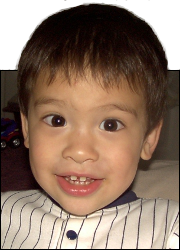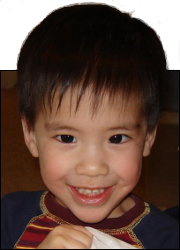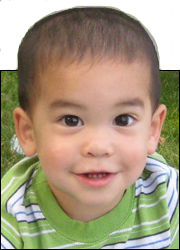Summer Book Thingy, 2009
Jul
15
2009
Every year, I try to read one book. If blogs counted as books, then my tally would be much much higher. During most of the year, life goes on without much book-learnin’ on my part. In the evenings after the kids are in bed, I do computery stuff while my wife breezes through a few books a week.
Summer vacation is a different story – I know I have a week with multiple chances to read, so I eagerly anticipate (are you allowed to use the word “anticipate” without the adverb “eagerly” accompanying it?) choosing the one book that I know I will complete this year. I know I should set better goals (“Slow down there, are you sure you can handle one whole book?”), but with a 4-month-old and our other children along on the vacation, I keep it realistic.
Also, I bring along several magazines that I would like to read but wouldn’t be disappointed if I didn’t. Since the reading times are 15-30 minutes lulls in the action (e.g. after the beach but before dinner), I find that magazines are good filler if I need to read.
This year, while I was contemplating which book to pick, my wife decided for me. And it wasn’t even a book I was considering. I usually aim for the classics. Two years ago, my book was Toilers of the Sea by Victor Hugo. I was disappointed by Google’s feelings about that book. When I was researching that book, Google asked me if I really meant “toilets of the sea”. I am glad to see that Google’s opinion of the book has improved, as it doesn’t ask that anymore.
I forget what I was considering this year, as I hadn’t narrowed it to any finalists yet. My wife had recently read Same Kind of Different as Me (henceforth known as SKODAM), and she highly recommended it as the book I should read on vacation. She had read SKODAM because my sister had recommended it. My sister’s exact words were “You must read this.”
SPOILER ALERT
I had heard about the book, read the thingies on the back cover, and so I knew just a little bit about the book. As I was reading, the story sounded too cliché. Part of the story is set in Texas in the early 1960s, so of course they had to work in JFK’s assassination in there. Although claiming that the protagonist had a front-row seat to the assassination was pushing the envelope of believability for a novel. It’s written by some Christian guys, so of course the guy goes to church and finds Jesus. Of course the rich guy had an affair – that’s the standard back-sliding Christian sin of choice in novels, I would think.
Of course the black guy was oppressed (and oppressed is putting it mildly) growing up – that’s also a standard story in novels. But come on, working the plantations in the 1950s and ’60s?! I mean, the story was written as a first-person account of life, and they almost had me believing it could be a real story if they had gotten the dates right. They forgot that slavery was a few decades earlier. And kids working the fields without being able to go to school?! Not even knowing there is school?! That’s not mid-20th century America.
It wasn’t until halfway through the book, when I got to the “after” pictures, that I realized the story was real. When I saw the pictures, it hit me that these were real people and this was their true story. At that point, I remembered that I already knew the story was real. I had heard it from my sister and even the book mentioned it somewhere on the cover or flap. But once I started reading, the story did seem so improbable that my brain had dismissed that little fact and latched onto the more believable description of the book as fiction.
END SPOILER ALERT
That book will get you thinking. About spiritual matters. About physical/material matters. About people matters. And about yourself.
Once I started reading that book, I finished it rather quickly. That left five days in the vacation and my book was already done. Right around the same time that I finished SKODAM, my wife finished reading one of her other books, The Sweetness at the Bottom of the Pie (by Alan Bradley, ISBN 978-0-385-34230-8, henceforth known as TSATBOTP). It is copyrighted as 2009 and lists the print date as May 2009, so it is quite new.
Even though it was a new book, the cover made the book look like it was decades old. I like the cover design – it was very well done, from the font to the coloring. That’s what made me pick it up and start reading it – I thought it was an older book. It wasn’t until later that I saw it was printed this year.
It is a murder mystery. Not being well-versed in murder mysteries, I have no reference to say it was better than something or like something else. I just know that it was a good book. The story was captivating and it’s the kind that makes you feel smarter for having read it. And it was clean – no gore, no romance. It’s written from the first-person view of an 11-year-old girl in England in 1950, so that should help ensure that future books (set for publishing in 2010 and 2011) are also clean.
If you’re looking for a novel to read, you should put TSATBOTP near the top of the list. To whet your appetite, I am including a couple of snippets from the book.
- If poisons were ponies, I’d put my money on cyanide.
- … I inhaled the camphoraceous steam of poultry eucalyptus, and somewhere up inside the sticky caverns of my head I thought I felt my sinuses throw their hands up into the air and surrender. I was feeling better already.
Maybe those scant fragments from the book don’t interest you. In that case I have done the book an injustice. Read it anyway.
“But beyond this, my son, be warned: the writing of many books is endless, and excessive devotion to books is wearying to the body.”
– Ecclesiastes 12:12





 This is Alpha, the first-born, when he was 2YO.
This is Alpha, the first-born, when he was 2YO. This is Beta, the second-born, when he was about 2YO.
This is Beta, the second-born, when he was about 2YO. This is Gamma, the third-born, when he was about 18MO.
This is Gamma, the third-born, when he was about 18MO.

